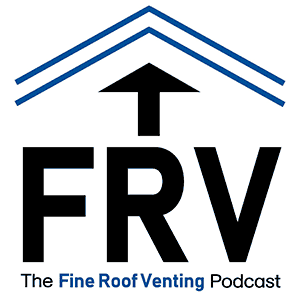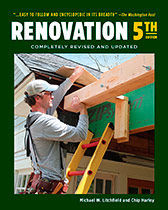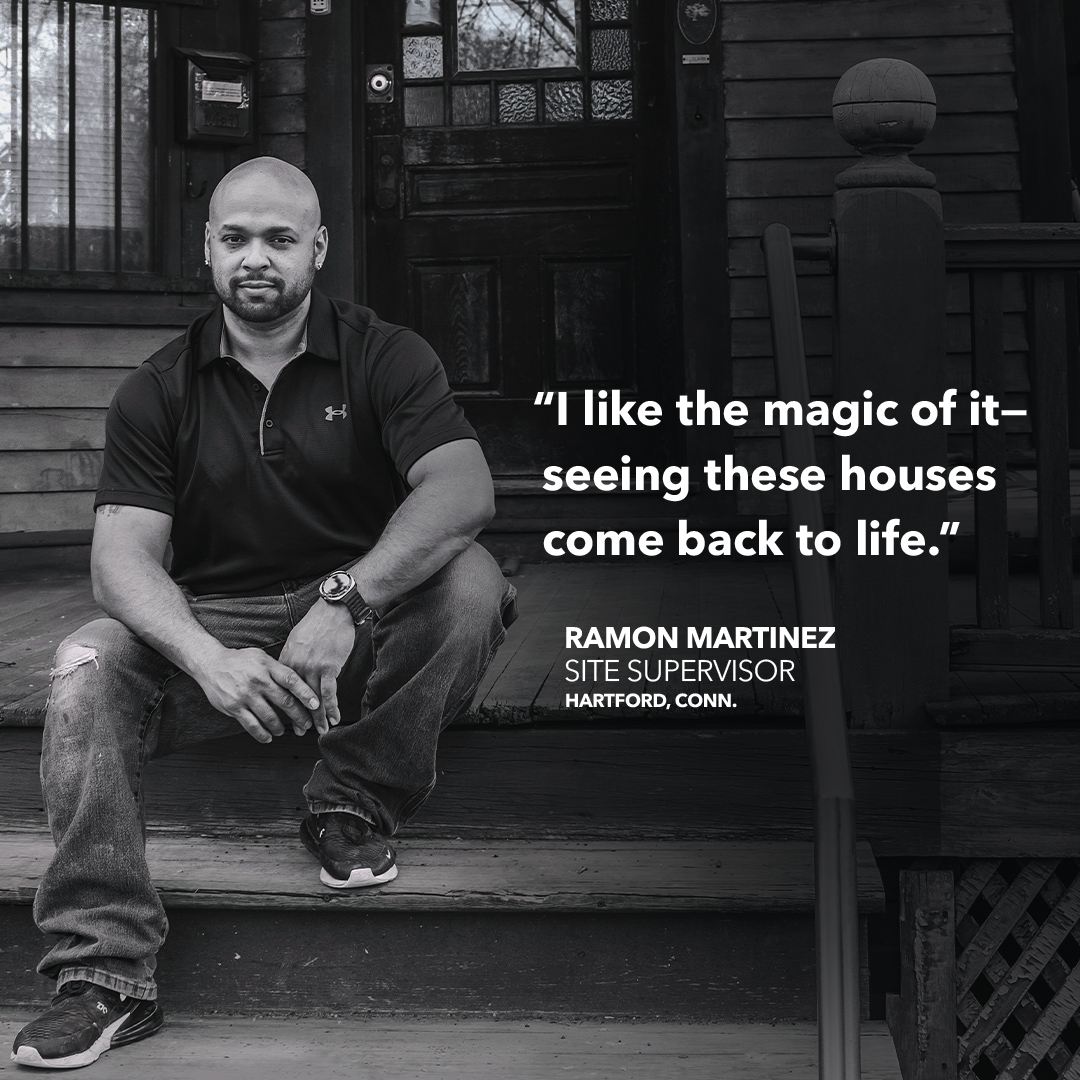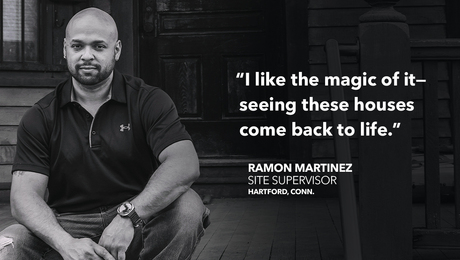Podcast 207: Home Maintenance, HVAC Zones, and Dangerous Dryer Vents
What’s the right book for learning home maintenance? How to properly insulate a garage ceiling? How can you improve the comfort of a big house with a one-zone heating and air-conditioning system? Is it okay to vent a dryer into a garage?
Follow the Fine Homebuilding Podcast on your favorite app. Subscribe now and don’t miss an episode:
 |
 |
Matt, Rob and Patrick get an awesome new Fine Homebuilding Podcast logo from Matt. Adam writes in to describe his attempt at starting a handyman business in the suburbs of Washington DC. Nicolas asks if there are any good reference books that describe how to take care of seasonal and second homes. Larry asks how to make his home woodshop more comfortable and Chris wants to know if his sister’s house should have its dryer vent outlet in the garage.
Listener Feedback:
Listener feedback #1
We heard from Matt: I made this while I’m waiting for my answer on the minisplit questions. Keep up the good work!
Listener feedback #2
Adam writes, Hey podcasters, Mike Guertin posted on Instagram a while back that he would not start a building or remodeling company in today’s market. Instead he would start a home maintenance and small repair company. He listed off a dozen items around the house that need regular maintenance but are often ignored by home owners. Based on this advice I tried it. I marketed myself around my local community in the suburbs of DC. This is also one of the richest counties in the country. The results? I had a hard time getting anyone to pay me more than 50/hr. Most jobs were quick, like drywall patches and ceiling fan replacement. But by time I’m done setting up and tearing down, the money is not worth the effort. Mike is right though; there is a market for this work. Just not sure who is going to do it.
Related links:
- Creating an Ideal-Customer Profile (AKA: Who do I really want to work for?)
- Construction Sales Techniques – 6 Ways to Engage Potential Customers’ Brains
- Follow Fine Homebuilding editorial advisor Mike Guertin on Instagram
 Editor Projects
Editor Projects

Matt: Arkansas trip.
Patrick: Carol’s design process for quilt (next week).
Rob: Webinar on MiniSplits: Designing for Cold Climates
Related links:
Question 1: What books or resources can you recommend on general maintenance and repairs for a seasonal property?
Nicolas writes, My family has a cabin in northern Wisconsin that was maintained by my grandparents before they passed away. My wife and I are generally the only two who use it on a regular basis now aside from holidays which means we’re tasked with making repairs and maintaining the aging cabin and barn. While I feel comfortable on the subjects of air-sealing and insulation after 200 episodes, are there any books or resources you can recommend on general maintenance and repairs for a seasonal property?
Ill try to poke around in the walls the next time I’m up because I’m sure there will be some hidden treasures worth sharing.
Related links:
- Renovation, 5th Edition
- GBA Forum
- FHB Forum
- FHB Instagram
- FHB Subscription
- Black & Decker Complete Home Improvement
- The Visual Handbook Of Building And Remodeling, 4th Edition
Question 2: Should I remove existing 6mil poly in my old walls before installing new drywall?
Larry, from Evanston, IL writes, Hey Patrick, Matt and Rob, I recently listened to an old Fine Woodworking podcast where Justin was a guest discussing home workshops. He mentioned that for a garage workshop you should install rigid insulation first then bat insulation. Well, I wish I had heard that podcast 2 years ago! That’s when I installed in my garage some extra bat insulation left over from an attic project (R21) and covered the faced insulation with 6mil poly. Now I’m thinking of putting up drywall for added protection and a better looking shop. My question is this: should I remove the 6mil poly before installing the drywall? Would leaving the poly between the faced insulation and the drywall create moisture problems?
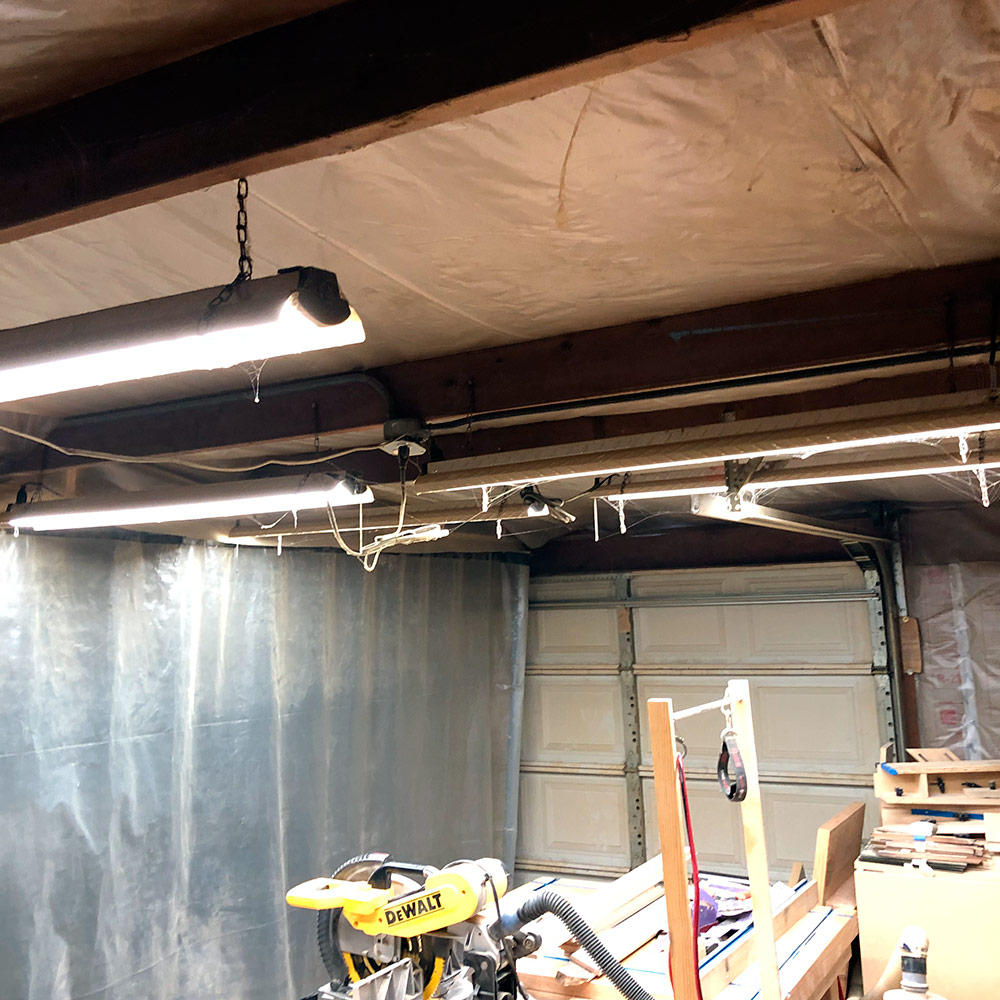 |
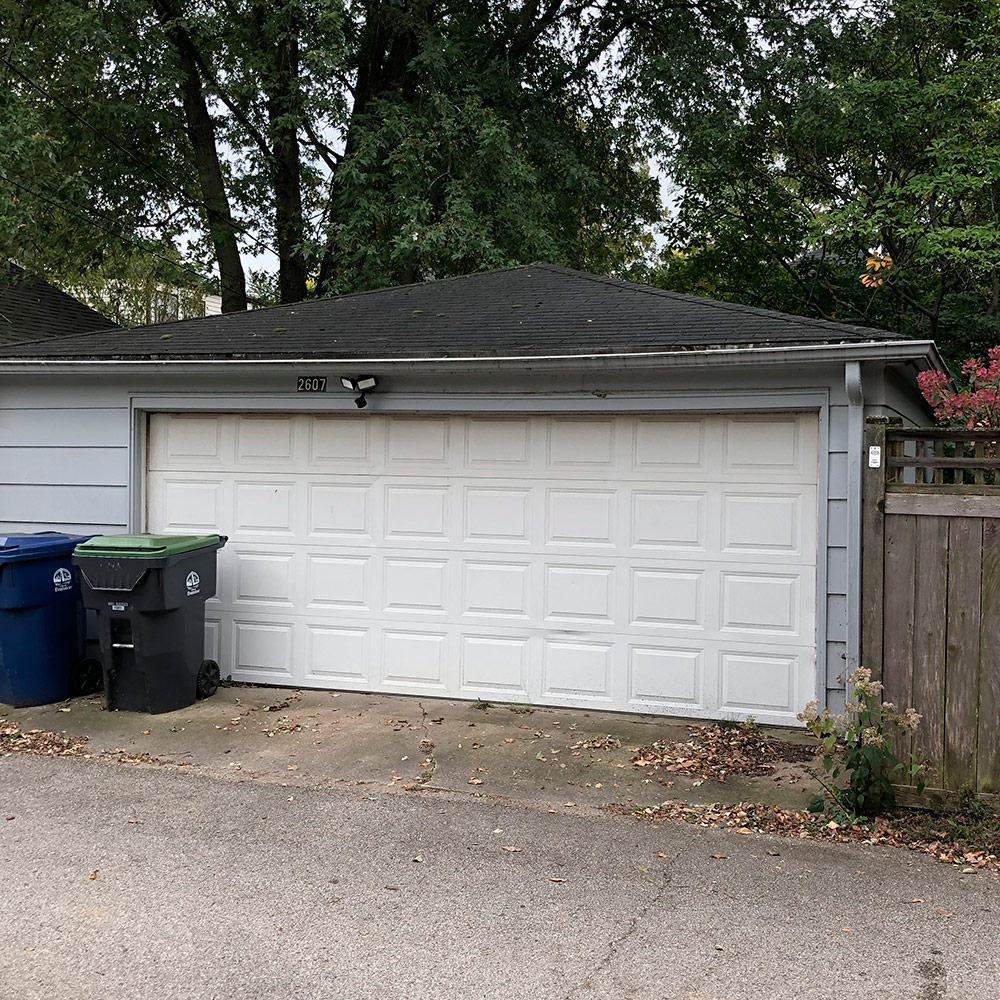 |
My 2½ car garage is 20×22 with half of it devoted to my workshop. I created a “curtain” out of the 6mil poly that runs on a hospital curtain-type track attached to the 2×6 running down the center of the garage. The winters here in northern Illinois (Evanston) can be pretty cold at times (think polar vortex), but last winter the inside temp was in the upper 40’s/low 50’s most days using a small propane heater (Mr. Buddy) – I’m hoping the drywall might improve the heat retention. I realize a lot of the heat loss is due to the standard metal garage door (as well as the concrete floor), but I’m hesitant to insulate the door – I’ve read that it would affect the balance and operation of the door. Any thoughts on that? Also, any suggestions for a cheap floor covering? I’m retired, so I have to watch my pennies…
Finally, the garage has a low hip roof with the one north/south 2×6 rafter and only 3 2×6 east/west rafters. I did stretch some poly across the workshop half of the garage as a “ceiling”, but is there anything that I might be able to install instead? I contacted one garage company about installing more east/west rafters but never heard back with a quote.
I really enjoy the podcast, even though I’m not a builder – I’ve picked up a lot of really good information over the past couple of years listening to it. Thanks!
Related links:
- Are you asking for problems if you put a plastic vapor barrier in your walls?
- Vapor Barriers Are a Good Thing, Right?
Question 3: How can I split my HVAC zones?
Tom from New Jersey writes, Builders of fine homes, My 3000 sf 4 bedroom New Jersey house was built in the early 80’s, and although it’s otherwise reasonably well designed – there is only a single zone for heat/AC. I’ve adjusted the dampers, but there’s still an uncomfortable difference between the 1st and 2nd floors. In the winter we heat mostly via a wood stove in the living room, and the bedrooms can be 10-15° lower than the 1st floor.
I believe I’d need 3 zones. One for the first floor, one for the two bedrooms on the side of the house with an optimistic pool, and another for the bedrooms on the side of the house where moss grows. I don’t think automated dampers or inflatable bags that close off certain runs are a good solution and sound like an inadequate work around from what I’ve read. I believe the options are going all in and adding smaller air handlers for true 3 zones or adding a mini-split for the bedrooms. The mini-splits offer another decision tree of forced air only on the 1st floor and mini-split upstairs, or just a mini split supplement to the current system. My current equipment is not terribly efficient, but they are overbuilt tanks that I don’t see a need to replace in the next 5 years. Thanks!
Related links:
Question 4: Does a dryer need to vent outside?
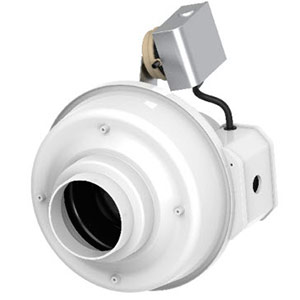
Related Links:
- Inovate Dryer Products
- 4 Products for Enhancing Air Flow in Dryer Vents
- Should Your Next Dryer Be Ventless?
- Fantech Dryer Exhaust Fan
And finally…
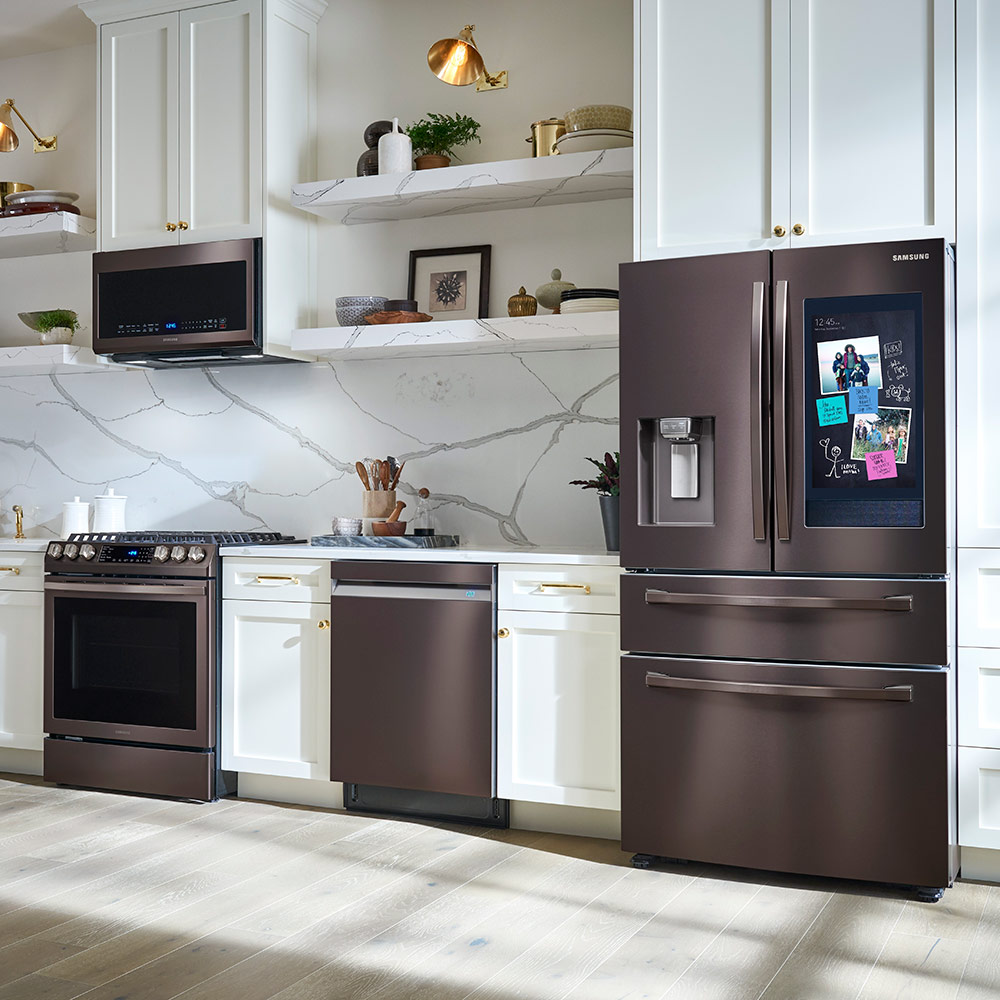
With Samsung’s new software updates, the Family Hub delivers a new level of connected living. Family Hub can help users save even more time by allowing them to select their favorite recipe and pre-heat their Samsung oven right from their Family Hub screen. Users can now mirror and control their Samsung TVs and Samsung smartphones and open their favorite mobile apps like YouTube, Prime Video and Hulu right from the screen. Users can also answer calls hands free via Bluetooth allowing them to enjoy talking to family and friends, while finishing dinner with ease.
Family Hub is now available nationwide and on Samsung.com in a range of configurations, including 4-Door Flex™, 4-Door French Door and 3-Door French Door. In addition to Tuscan Stainless Steel, it is also available in Black Stainless and Stainless Steel.
If you have any questions you would like us to dig into for a future show, shoot an email our way: [email protected].
If we use your question we’ll send you a FHB Podcast sticker!
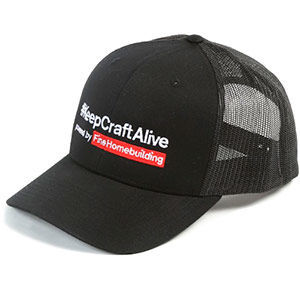 #KeepCraftAlive
#KeepCraftAlive
KeepCraftAlive hats help celebrate the value of true craftsmanship–plus 50% of all proceeds from every hat sold go to the #KeepCraftAlive Scholarship Fund, supported by Fine Homebuilding and SkillsUSA.
Buy a #KeepCraftAlive hat or t-shirt
This episode of the podcast is brought to you by Danner
We’d like to thank Danner, who sponsors this podcast because they believe in us. They believe in quality, and craftsmanship…but more than anything, they believe in the power of following your own path.
For more than 80 years Danner has made boots for those who have a trail to blaze. Boots like the Bull Run. Hand built in the USA with durable, full-grain leather uppers, and stitch-down construction for strength and stability. The Bull Run is built in a timeless design for both men and women with unmatched quality and durability that stands the test of time. The Bull Run boot by Danner offers iconic style and legendary craftsmanship for those who earn their independence.
You can find yours at Danner.com.
Fine Homebuilding podcast listeners can now get 20% off anything in the Taunton store, including Renovation, now in its 5th edition. This home repair and remodeling bible describes in unvarnished detail best practice for hundreds of renovation projects. Also check out the Code Check series. These sturdy, spiral bound reference books will help you navigate the International Residential Code, The National Electric Code and the Universal Plumbing Code. Use the discount code FHBPODCAST to take advantage of this special offer.
We hope you will take advantage of a great offer for our podcast listeners: A special 20% off the discounted rate to subscribe to the Fine Homebuilding print magazine. That link goes to finehomebuilding.com/podoffer.
The show is driven by our listeners, so please subscribe and rate us on iTunes or Google Play, and if you have any questions you would like us to dig into for a future show, shoot an email our way: [email protected]. Also, be sure to follow Justin Fink and Fine Homebuilding on Instagram, and “like” the magazine on Facebook. Note that you can watch the show above, or on YouTube at the Fine Homebuilding YouTube Channel.
The Fine Homebuilding Podcast embodies Fine Homebuilding magazine’s commitment to the preservation of craftsmanship and the advancement of home performance in residential construction. The show is an informal but vigorous conversation about the techniques and principles that allow listeners to master their design and building challenges.
Other related links
-
- All FHB podcast show notes: FineHomebuilding.com/podcast.
- #KeepCraftAlive T-shirts and hats support scholarships for building trades students. So order some gear at KeepCraftAlive.org.
- The direct link to the online store is here.
